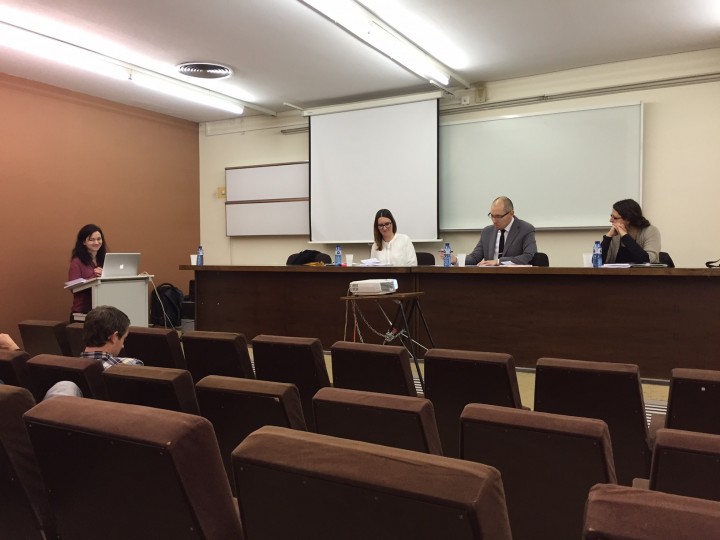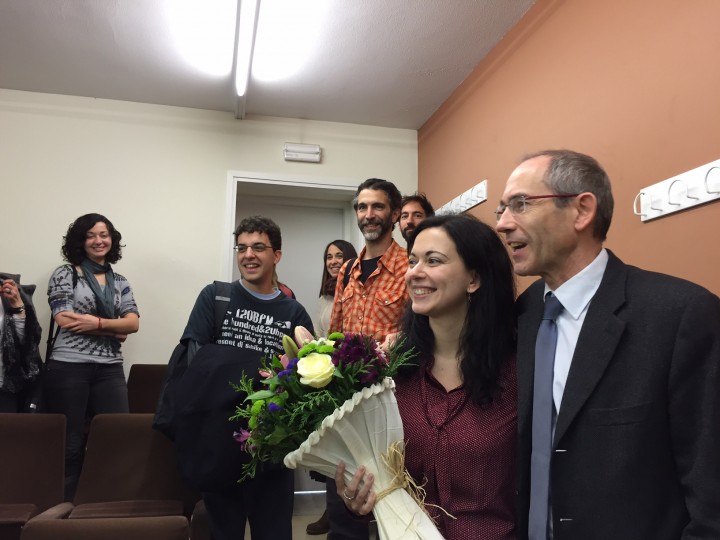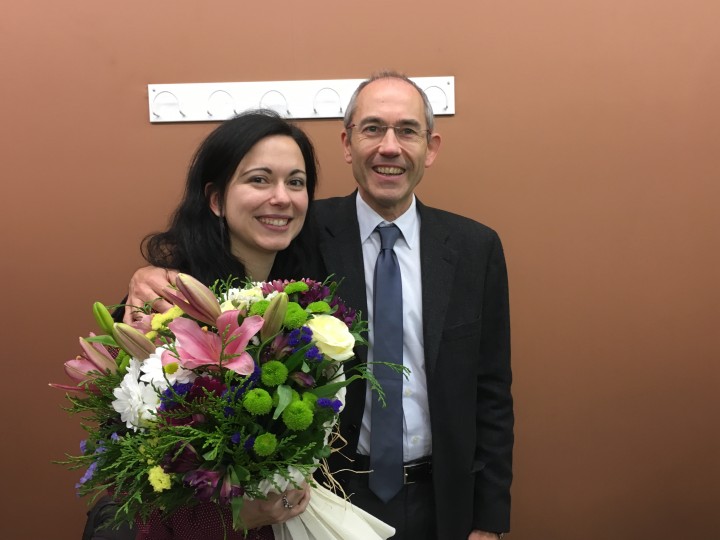Last Friday December 18th, 2015, at 12 o’clock at the Faculty of Medicine, Miriam Cornella defended her thesis entitled Auditory regularity encoding in the human brain: cortical and subcortical mechanisms. The thesis was supervised by Dr. Carles Escera, and the panel was chaired by Dr. David Pérez-González, from the University of Salamanca (Spain), and included Dr. Judith Domínguez-Borràs from University of Geneve (Switzerland) and Iria SanMiguel from University of Barcelona.
The thesis was submitted as a compilation of four studies as follows:
1. Cornella, M., Leung, S., Grimm, S. & Escera, C. (2012). Detection of simple and pattern regularity violations occurs at different levels of the auditory hierarchy. PLoS ONE, 7(8):e43604.
2. Cornella, M., Leung, S., Grimm, S., Escera, C. (2013). Regularity encoding and deviance detection of frequency modulated sweeps: human middle- and long-latency auditory evoked potentials. Psychophysiology, 50, 1275-1281.
3. Cornella, M., Bendixen, A., Grimm, S., Leung, S., Schröger, E., & Escera, C. (2015). Spatial auditory regularity encoding and prediction: human middle-latency and long-latency auditory evoked potentials. Brain Research, 1626, 21-30.
4. Cornella M, Costa‐Faidella J, Hervas M, Leung S, Rueda I, Escera C (2015). Atypical subcortical repetition suppression relates to auditory hypersensitivities in children diagnosed with autism spectrum disorder (submitted).
After a very nice presentation by Miriam and an insighful discussion and defence, the thesis was awarded the maximum grade of Excellent.





